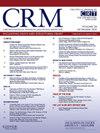冠状动脉疾病对经导管主动脉瓣置换术患者预后的影响。
IF 1.9
Q3 CARDIAC & CARDIOVASCULAR SYSTEMS
引用次数: 0
摘要
背景:冠状动脉疾病(CAD)对严重主动脉瓣狭窄(AS)患者行经导管主动脉瓣置换术(TAVR)的预后影响尚不清楚。我们根据CAD负担对患者进行分层,评估了CAD对TAVR手术安全性和长期不良结局的影响。方法:这项单中心回顾性研究根据血管造影严重程度和位置将患者分为低、中、高负担。主要结局为全因死亡率。次要结局是心血管(CV)死亡、心肌梗死(MI)、心力衰竭(HHF)住院和主要不良冠状动脉事件(MACE)。结果:在1803例连续患者中,分别有1281例(71%)、382例(21%)和140例(8%)患者被确定为低、中、高冠状动脉负担。两组之间的手术结果和住院死亡率没有差异。在4.8(3.7-6.1)年的中位随访中,全因死亡率的发生率分别为49%、54%和62%。在调整年龄和合共病后,高负担性CAD与全因死亡率(HR: 1.35, 95% CI 1.07-1.70, P = 0.011)、cv -死亡率(HR: 1.54, 95% CI 1.07-2.17, P = 0.02)和MACE(调整HR 1.63, 95% CI 1.23-2.15, P = 0.001)相关,但与HHF (HR: 1.43, 95% CI: 0.96-2.13, P = 0.082)无关。两者均为中间值(HR 2.87, CI 1.83-4.50, P)。结论:增加CAD负担不影响TAVR手术安全性,因此血管重建术不应作为TAVR手术的先决条件。高CAD负担与长期不良事件相关。这一组将受益于未来针对TAVR患者CAD管理的研究。本文章由计算机程序翻译,如有差异,请以英文原文为准。

Prognostic impact of coronary artery disease in patients undergoing transcatheter aortic valve replacement
Background
The prognostic impact of coronary artery disease (CAD) in patients with severe aortic stenosis (AS) undergoing transcatheter aortic valve replacement (TAVR) remains unclear. We assessed the impact of CAD on TAVR procedural safety and long-term adverse outcomes by stratifying patients according to CAD burden.
Methods
This single-centre, retrospective study stratified patients into low-, intermediate- and high-burden according to angiographic severity and location. The primary outcome was all-cause mortality. Secondary outcomes were cardiovascular (CV) death, myocardial infarction (MI), hospitalization for heart failure (HHF) and major adverse coronary events (MACE).
Results
Of 1803 consecutive patients, low-, intermediate- and high-coronary burden was identified in 1281 (71 %), 382 (21 %) and 140 (8 %) patients, respectively. There were no differences in procedural outcomes or in-hospital mortality between groups. At a median follow-up of 4.8 (3.7–6.1) years, the incidence of all-cause mortality was 49 % vs 54 % vs 62 %, respectively. After adjusting for age and comorbidities, high-burden CAD was associated with all-cause mortality (HR: 1.35, 95 % CI 1.07–1.70, P = 0.011), CV-mortality (HR: 1.54, 95 % CI 1.07–2.17, P = 0.02) and MACE (adjusted HR 1.63, 95 % CI 1.23–2.15, P = 0.001), but not HHF (HR: 1.43, 95 % CI: 0.96–2.13, P = 0.082). Both intermediate- (HR 2.87, CI 1.83–4.50, P < 0.001) and high-burden groups (HR 2.69, 95 % CI 1.38–5.25, P = 0.004) were associated with MI.
Conclusions
Increasing CAD burden does not impact TAVR procedural safety and therefore revascularization should not be a pre-requisite before TAVR. High CAD burden is associated with long-term adverse events. This group would benefit from future studies addressing CAD management in TAVR patients.
求助全文
通过发布文献求助,成功后即可免费获取论文全文。
去求助
来源期刊

Cardiovascular Revascularization Medicine
CARDIAC & CARDIOVASCULAR SYSTEMS-
CiteScore
3.30
自引率
5.90%
发文量
687
审稿时长
36 days
期刊介绍:
Cardiovascular Revascularization Medicine (CRM) is an international and multidisciplinary journal that publishes original laboratory and clinical investigations related to revascularization therapies in cardiovascular medicine. Cardiovascular Revascularization Medicine publishes articles related to preclinical work and molecular interventions, including angiogenesis, cell therapy, pharmacological interventions, restenosis management, and prevention, including experiments conducted in human subjects, in laboratory animals, and in vitro. Specific areas of interest include percutaneous angioplasty in coronary and peripheral arteries, intervention in structural heart disease, cardiovascular surgery, etc.
 求助内容:
求助内容: 应助结果提醒方式:
应助结果提醒方式:


